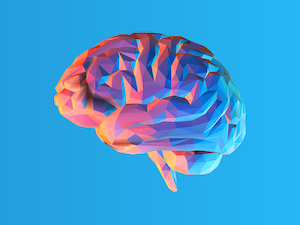Scientists have discovered a neurodegenerative disease that mimics Alzheimer’s disease but doesn’t have aberrant proteins usually seen with the condition. Experts have dubbed this disease LATE, which stands for limbic-predominant age-related TDP-43 encephalopathy and it seems to be caused by a different malfunctioning protein. Here’s what you should know about this discovery.
What is LATE Dementia?
According to researchers, LATE is a type of dementia that develops slower than Alzheimer’s and appears later in life — in the 80s or 90s. In fact, it may account for 17 percent of dementia cases. People who develop LATE have brains without the protein amyloid beta, which is the sticky protein found in Alzheimer’s that forms plaque and strangles healthy brain cells. Issues with TDP-43 are responsible for diseases like Lou Gehrig’s disease and frontotemporal lobar degeneration. Problems with the protein can also cause the hippocampus to shrink, which can cause symptoms similar to Alzheimer’s.
LATE is broken out into three stages:
Stage 1: Only the amygdala is impacted
Stage 2: The amygdala and hippocampus are impacted
Stage 3: The amygdala, hippocampus and frontal gyrus are impacted
Many people over age 85 have misfolded TDP-43 proteins in their brain, according to the National Institutes of Health: “Roughly 25 percent of individuals over 85 years of age have enough misfolded TDP-43 protein to affect their memory and/or thinking abilities.”
LATE, according to researchers, is a under-recognized condition with the potential to make a very large impact on public health.
Differences between LATE and Alzheimer’s
Though LATE and Alzheimer’s disease share similar symptoms like memory loss, confusion and cognitive decline, there are a few distinguishing features between the two. LATE tends to occur in people in their 80s or 90s while Alzheimer’s usually begins around 65. LATE also progresses more slowly than Alzheimer’s unless a person has both conditions. And while Alzheimer’s can have a genetic connection, LATE does not.
What Else to Know
Alzheimer’s and LATE can only be diagnosed after death. There is no cure, but some of the symptoms of LATE may be eased with medications to treat Alzheimer’s. However, it’s important to note that because the two conditions are similar, researchers theorize the recent failure of certain new Alzheimer’s drugs in clinical trials may be because the patients enrolled in the trials had LATE, not Alzheimer’s.
As people live longer, scientists are working to define a biomarker for TDP-43. Without one, it will be impossible to distinguish between Alzheimer’s and LATE while someone is living. For now, doctors rely on less precise methods like brain MRIs, which show a slightly differing pattern of nerve damage between the two diseases.
If you have questions about dementia or are concerned about your brain health, talk to your doctor.











